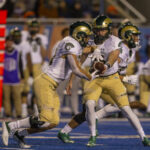The Atlanta Braves, a storied franchise in Major League Baseball, boast a uniform history as rich and dynamic as their on-field legacy. From their early days to their modern looks, the Braves’ uniforms have undergone fascinating transformations, reflecting changing times and baseball fashion trends. Let’s delve into the Atlanta Braves uniform history and explore the evolution of their iconic look.
1966-1967: Milwaukee Roots in Atlanta
Upon relocating to Atlanta in 1966, the Braves initially carried over their Milwaukee jerseys, providing a sense of continuity during the team’s transition. For their inaugural seasons in Atlanta, the home jerseys, manufactured by Wilson, remained consistent with their Milwaukee predecessors.
These home uniforms were clean and classic, featuring a white base with the team name “Braves” emblazoned across the chest in a cursive script, complete with the iconic tomahawk underneath. Road jerseys, initially produced by Rawlings and later also by MacGregor, mirrored this design but in a grey fabric, standard for away games during this era.
The manufacturers varied slightly in 1967, with Wilson continuing to supply home jerseys, while road jerseys were provided by Rawlings and MacGregor, indicating potential adjustments in supplier contracts. Despite these minor variations, the overall uniform design remained consistent, establishing the Braves’ visual identity in their new city.
1968-1971: A New Era of Design
The late 1960s marked the introduction of new jersey designs for the Atlanta Braves. A significant change was the debut of an all-navy road cap, adding a bolder element to their away attire. Wilson manufactured the home jerseys, while Spalding took over production for the road uniforms during this period.
These new designs likely aimed to modernize the team’s image and create a distinct visual identity for the Atlanta Braves. Notably, from 1969 to 1971, the all-navy cap became the standard both at home and on the road, streamlining the team’s look.
The home jerseys remained white, and the road jerseys stayed grey, but subtle alterations in lettering and striping likely occurred, contributing to the evolving Atlanta Braves uniform history.
1972: The Infamous “Softball” Style
1972 witnessed a controversial and short-lived uniform experiment: the debut of the “softball” style jersey. Made from a lightweight cheesecloth material and featuring only two buttons, these jerseys were a significant departure from traditional baseball attire. Manufactured by Medalist Sand-Knit, these uniforms were widely criticized for their unconventional look and flimsy fabric.
As the original text humorously notes, opposing players like Doug Rader even poked fun at the style, questioning if it was a softball game. This experiment highlights a rare instance in Atlanta Braves uniform history where a design choice missed the mark with fans and players alike.
1973: Return to Tradition and V-Necks
The “softball” jersey era was quickly relegated to a historical footnote as the Braves reverted to more conventional designs in 1973. Wilson became the home jersey provider, introducing a different script and number font, particularly noticeable in the “B” of “Braves.” The two-button style was abandoned in favor of a more standard V-neck design for both home and road jerseys.
While Wilson took over home jersey production, Medalist Sand-Knit continued to supply the road uniforms for this single season, creating a mix of manufacturers. This year served as a transitional period, moving away from the previous year’s experiment and establishing a more traditional uniform direction.
1974-1975: Uniform Consistency Across Home and Road
By 1974, the Atlanta Braves achieved uniform consistency by switching to Wilson jerseys for both home and road games. This move ensured that the script and number fonts matched across both sets of uniforms, creating a more cohesive team aesthetic.
This standardization marked a step towards a more polished and unified team appearance, a common practice in professional sports. The home jerseys remained white, and the road jerseys stayed grey, maintaining the classic baseball color scheme.
The consistent use of Wilson as the sole manufacturer for both home and road uniforms in 1975 further solidified this design uniformity.
1976-1978: Pinstripes and “Atlanta” Script
A significant style shift occurred in 1976. Home jerseys transitioned to pullover style with pinstripes, a popular baseball fashion trend of the era. The road grey jerseys were redesigned based on the older home design, and the script on the road jerseys changed from “Braves” to “Atlanta,” reflecting a city-centric approach. Wilson continued as the uniform manufacturer.
Notably, the 1976 home jerseys also featured the NL centennial patch, commemorating a significant milestone for the National League. This addition makes the 1976 jersey a unique piece in Atlanta Braves uniform history.
The pinstriped home pullovers and “Atlanta” script on the road jerseys remained consistent through 1978, defining the Braves’ look for the latter half of the 1970s.
1979: Adding Player Names
1979 marked a small but significant change: the addition of player names on the back of road jerseys. This became a standard practice across MLB, enhancing player recognition and fan engagement. Wilson continued as the uniform supplier, maintaining the overall design established in previous years.
1980: Powder Blue Roads and Sans-a-Belt Pants
1980 brought about more substantial changes. Pinstripes were removed from home jerseys, and player names were added to the back. The road jersey underwent a complete color transformation, becoming powder blue, a popular alternative road uniform color in the late 1970s and early 1980s. Sans-a-belt pants were also adopted, streamlining the uniform’s lower half. Wilson remained the uniform manufacturer.
The powder blue road jerseys offered a vibrant contrast to the traditional grey, adding a fresh and modern element to the Atlanta Braves uniform history.
1981-1986: Script “A” and New Caps
The early 1980s saw further refinements to the Braves’ uniforms. The road jersey’s “A” changed to the older uppercase script “A,” a subtle nod to the team’s visual heritage. New home and road caps were also introduced, completing the updated look. Wilson continued to produce the uniforms throughout this period.
Throughout the 1980s, the Braves wore various patches to commemorate special occasions. In 1983, they sported the Georgia 250th Anniversary patch, and in 1985, they wore the Atlanta Braves 20th Anniversary patch on their home jerseys only, celebrating milestones in both state and team history.
1987-2004: Return to Traditional Button-Downs and Red Tomahawk
1987 ushered in a significant uniform overhaul for the Braves. They returned to button-down jerseys, moving away from the pullover style. This refresh of their traditional style was inspired by the uniforms worn from 1946 (Boston Braves) through 1962 (Milwaukee Braves). The key difference in this iteration was the tomahawk logo, which was now red instead of black. Wilson initially manufactured the uniforms, with Russell Athletic later taking over road jersey production in the 1990s.
This return to a classic button-down style with the refreshed red tomahawk became a defining look for the Atlanta Braves for nearly two decades, coinciding with a period of sustained team success and solidifying these uniforms as iconic in Atlanta Braves uniform history.
Throughout the late 1980s and 1990s, the Braves sported anniversary patches, including a 25th Anniversary patch in 1990 and a 30th season in Atlanta patch in 1995, further enriching the historical tapestry of their uniforms.
Special patches continued into the late 1990s and early 2000s, including a Jackie Robinson patch in 1997 and a patch for the 25th anniversary of Hank Aaron’s 715th home run in 1999, and an All-Star Game patch in 2000.
This era of Atlanta Braves uniform history, lasting until 2004, is characterized by the enduring button-down style, the red tomahawk, and the powder blue road jerseys, creating a look that is both classic and distinctly Atlanta Braves.
Conclusion
The Atlanta Braves uniform history is a fascinating journey through baseball fashion and team identity. From inheriting Milwaukee designs to experimenting with unique styles and ultimately embracing a classic look, the Braves’ uniforms reflect the team’s evolution and its connection to the city of Atlanta. These changes, big and small, contribute to the rich visual narrative of one of baseball’s most iconic franchises.


